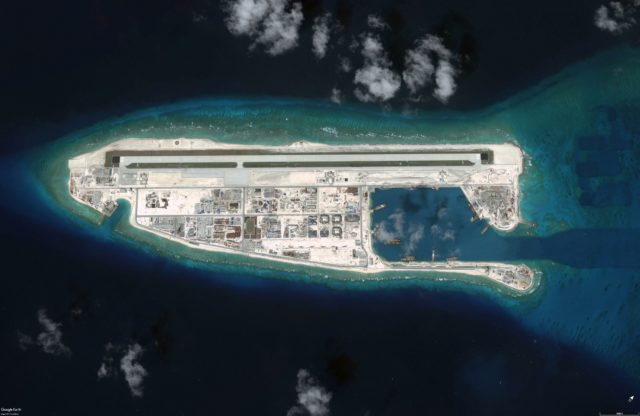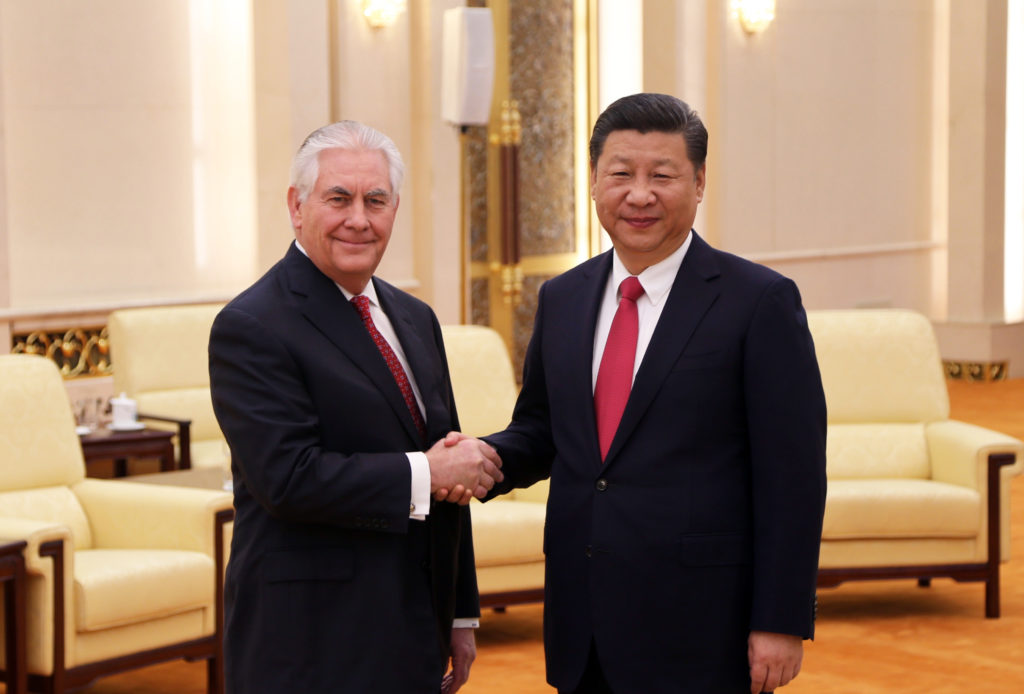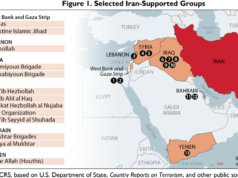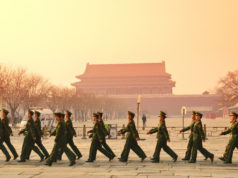
“All nations want peace, but they want a peace that suits them.” – Admiral Jacky Fisher (Royal Navy), 1894
International politics rest upon a contradiction. Systemically hierarchical organization is nearly impossible. Despite the universalist ambitions of imperial powers, the geographical and material scope of the world precludes a globally legitimate international order. Nevertheless, one can identify multiple “orders” throughout history, both local, as in classical Greece, imperial China, medieval Italy, and feudal Japan, and global, in particular the present Anglo-American system.
But order is precarious. System-transforming great power war is its greatest enemy. The most materially robust agents in a system can, if committed, smash an international order with their raw power. Such confrontations characterize international history, with the Napoleonic Wars and World Wars serving as recent examples.
The shape of these systemic conflicts is readily apparent. Athenian naval power and imperial ambition made it an adversary of Greece’s traditional hegemon, Sparta. German power made it Britain’s natural 20th-century opponent. Similarly, present power dynamics between the United States and China predispose the two countries to rivalry. Not only does strength balance strength, but rising states also stress the static distribution of power a hegemon imposes.
In the prelude to great power confrontation, one must understand both the international competitors and potential flashpoints that can instigate conflict. Great power wars are seldom unintentional. Nevertheless, they typically begin unplanned – Thucydides’ account of the Peloponnesian War dedicates significant time to this fact. Thus, assessing the dynamics of this flashpoint is critical to projecting potential Sino-American escalation.
The South China Sea (SCS) in particular requires careful study. Three aspects comprise a proper assessment of SCS conflict potential. First, a review of great power interests in the SCS reveals the specific relevance of that potential flashpoint to broader Sino-American rivalry. Second, an account of previous Chinese expansionist efforts, and responses by regional actors, is necessary to understand the type of potential escalation. Third, a review of the balance of forces indicates the strong incentives for limited Chinese aggression. These aspects combine to demonstrate the gap between American deterrence goals and present strategic posture.
Dynamics, Interests & SCS
The Korean Peninsula and East China Sea are alternative potential flashpoints to the SCS. However, the SCS’s conflict potential is higher because of the region’s direct connection to China’s energy insecurity and likely plans for economic dominance.
China’s political order rests upon contradiction. State-capitalist authoritarianism requires selective liberalization and engagement with the international economy while preserving overall centralization. This policy’s material benefits have enabled its success. Consistent economic growth has staved off calls for internal political liberalization and deeper economic reforms. Nevertheless, the present Chinese system has weak spots. The potential for a public debt overhang due to state involvement in market activity could stifle economic growth, as Japan experienced in its 1990s recession. Moreover, China’s 1.4 billion people dually enable Chinese economic growth and make extremely high energy demands. China has lacked sufficient domestic energy reserves to support its economy since the mid-1980s. Although coal still provides the majority of China’s electrical power, and nuclear power investments have paid dividends, the Peoples Republic of China (PRC) remains 60 percent oil import dependent.
This energy deficit explains the SCS’s relevance. One quarter of the world’s seaborne oil passes through the Strait of Malacca on the SCS’s western edge – 80 percent of Chinese maritime oil imports transit the strait. Beijing’s One Belt – One Road initiative through Central Asia will offset some of China’s maritime oil import dependence, but for at least the next decade, a hostile power controlling the SCS would pose a threat to Chinese economic security. Additionally, the SCS holds at least 11 billion barrels of oil and 250 trillion cubic feet of natural gas. Chinese control of the SCS, therefore, supports political stability by alleviating the country’s energy pressures, while hostile control of the SCS gives external powers significant leverage in any crisis scenario. Moreover, fulfilling President Xi Jinping’s “China Dream” requires continuing economic growth, as returning China to its “historical” global position would entail creating a state that produced one-third of global Gross Domestic Product (GDP). Whether China’s long-term goal is regime security or reclaiming great power status, it is clear that energy flows, and therefore the SCS, will be relevant, and that consolidating control over the area is in Beijing’s interest.
Conversely, the United States has a material interest in denying China control over the SCS’ trade flows and energy reserves. Despite fluctuations in relative power, America has maintained its position of international hegemon since the end of the Second World War. China, in entente with Russia, Iran, and North Korea, threatens the Anglo-American international order that provided the framework for post-World War II international relations.
Whether China’s insecurity or desire for domination drives it to control the South China Sea, its stranglehold there would give it control over 50 percent of the world’s maritime trade. American power is predicated on the uninterrupted flow of goods internationally – freedom of navigation as a normative goal is derived from this positive benefit. Declarations of good faith will not ensure China respects this principle, making the risk of Chinese domination of the SCS too high to allow. Additionally, Chinese control would pressure American lines of communication between its Euro-Mediterranean, Middle Eastern, and Asian military forces and regional allies. Just as Chinese interest in the SCS consistently leads to attempted expansion, American regional interest consistently dictates countering China’s position. This persistence of overlapping and opposing interests makes the SCS a likely Sino-American flashpoint.
Encroachments and Responses
Alongside the great powers, Vietnam and the Philippines serve as the primary SCS regional actors, while Taiwan and Malaysia have relevance. Legally, SCS disputes center around Chinese assertion of its territorial rights over an area enclosed by the “Nine-Dash Line.” The 1951 Treaty of San Francisco, which officially ended hostilities between Japan and the Allied Powers, terminated Japanese claims to all SCS territories. However, the treaty indicated no successors to Japan’s claims, leading to the Republic of China (Taiwan) and the People’s Republic of China (mainland) claiming sovereignty over the entirety of the area. This demarcation line directly conflicts with Vietnamese, Philippine, Indonesian, Malaysian, and Bruneian Exclusive Economic Zones (EEZ) as demarcated by the UN Convention on the Law of the Sea (UNCLOS).
These overlapping claims effectively make the entirety of the SCS a legally contested zone. Competition centers upon reefs and archipelagos, most importantly the Spratly and Paracel Islands and Scarborough Shoal. If China is to fulfill its aim of controlling the SCS, it must compensate for its inferior initial position – China’s coastline curves northeast from Hainan, away from the maritime chokepoints it covets. Military installations on the archipelagos throughout the SCS, in particular the Spratly and Paracel Islands and Scarborough Shoal, would allow China to police all traffic heading northeast from the Strait of Malacca, descend on the Strait in the event of conflict, and control oil flows towards energy-import dependent Japan.
To this end, China has engaged in an increasingly assertive campaign of maritime expansion. Sporadic incidents occurred from the 1970s onward, including two naval skirmishes between China and Vietnam. However, 2012 marked a turning point in Chinese policy – since then Beijing has actively sought to create faits accomplis that preclude responses to its acquisitions, or to stoke tensions and provoke Philippine or Vietnamese escalation. Chinese island construction is an example of the former approach. Focusing its efforts on the Spratlys, China created 3,200 acres of land between 2013 and 2016 by piling sand and concrete atop reefs throughout the archipelago.
Of particular note are the Chinese installations at Fiery Cross, Mischief, and Subi Reefs. Each artificial island sports a military-grade runway, while Fiery Cross and Mischief in particular field anti-air and anti-ship missile batteries, deep-water ports, and living facilities for permanent personnel. The 2012 Scarborough Shoal and 2014 HD-931 standoffs exemplify the latter strategy. The first incident was sparked when Chinese ships prevented the Philippine Navy from arresting Chinese fishermen accused of illegally collecting coral and sharks. China instigated the second standoff by moving the HD-931 oil rig to within disputed waters near the Paracel Islands, and barred Vietnamese interference by deploying 46 Navy and Coast Guard ships along with a number of fishing boats in support. This combination of approaches indicates that China hopes to either create facts on the ground that cannot be overturned without significant escalation, or prompt an escalation from one of its smaller adversaries that justifies a major military response.

Small states typically have limited options when confronted by territorially acquisitive great powers. Like the classical Greek Poleis of Melos and Plataea, they must choose either surrender or destruction absent external intervention. Vietnam and the Philippines are trapped by this same dilemma. Ceding ground to China directly limits their freedom of movement – too many capitulations, and China will be able to dictate Vietnamese and Philippine trade and military policy. But a confrontation is equally undesirable, considering the preponderance of power China can bring to bear. The BRP Sierra Madre, a 73-year-old Tank Landing Ship run aground on Second Thomas Shoal, and its handful of Philippine Marines, is the Philippine response to China’s Spratlys expansion.
Moreover, China’s physical dominance allows it to diversify its SCS assets, forcing Vietnam and the Philippines to overstretch their resources. The China Coast Guard (CCG), rather than the Peoples Liberation Army-Navy (PLAN), has recently been the tool of choice for Beijing to assert its sovereignty over disputed South China Sea waters. China’s regional competitors are forced to choose between attempting to match the CCG’s operational tempo with their own Coast Guards, and risk being progressively outclassed, or employ naval forces, and potentially prompt an escalation. The Philippines attempted to legally outmaneuver China through the United Nations, but international legal restraints have done little to change China’s posture. Malaysia and Taiwan suffer from the same issues as Vietnam and the Philippines, although their interests are confined to specific sectors of the SCS.
American Involvement
The present balance of forces creates major incentives for Chinese escalation. China benefits from a lack of direct American regional engagement. Vietnam, the Philippines, Malaysia, and Taiwan all have an interest in coordinating their responses to China’s expansion. However, these actors have not been able to resolve their own territorial disputes. Present regional organizations, namely ASEAN, have not significantly increased cohesion – cracks have appeared between the major players in the SCS dispute and disengaged states like Thailand. The United States can serve as an external balancer, facilitating coordination between South Asian states and bolstering their efforts with its own military capabilities.
Despite the Trump administration’s significantly more aggressive rhetoric, American SCS policy has remained remarkably similar since 2014. The United States has responded to Chinese expansion with its regional military assets, conducting Freedom of Navigation Operations (FONOPS) in disputed maritime areas and occasional flyovers of disputed reefs and islands. Washington has also diplomatically supported de-escalation attempts, while pubicly rebuking China’s territorial aggression. However, this has done little to curb China’s efforts.
Without an increased American presence, China will remain free to bully smaller regional powers, forcing them to choose between maintaining the status quo and accepting the erosion of their territory, or increasing the level of risk by escalating. History demonstrates the low risk of “accidental escalation” – the 1988 Black Sea Bumping incident serves as an example. However, that does not decrease the chances of conflict. The crowded air and sea-lanes and overlapping territorial claims in the SCS create a number of areas in which China could provoke a crisis by declaring an Air Defense Identification Zone or violating Vietnamese and Philippine fishing rights. Vietnam and the Philippines cannot be expected to restrain themselves forever. The involvement of a volatile personality like Philippine President Rodrigo Duterte increases the possibility of a violent response to the next major PRC provocation. Despite his previous pro-China rhetoric, Duterte has increased Philippine military presence in the Spratlys, fortifying nine islands in the archipelago.
Armed escalation between the PLA and Vietnamese or Philippine Armed Forces would likely entail the overwhelming application of force by the Chinese against the relevant adversary. The balance of forces heavily favors China. The Philippine Navy fields three former Hamilton-class Coast Guard Cutters and a WWII-era Canon-class destroyer as its large surface combatants, supplementing them with secondhand minesweepers and corvettes. Its two-ship frigate purchase from Hyundai Heavy Industries (HHI) and one-ship corvette buy from the ROK Navy have yet to be delivered. Thus, Philippine surface combatants are at best 40 years old.
By contrast, the PLAN South Seas Fleet’s Type-052D, Type-054, and Type-056 surface combatants are some of the world’s most modern warships. Even its eight Ming-class submarines, all of which are based on early Cold War designs, would pose a significant threat to Philippine naval forces. Moreover, China’s island-based air assets would significantly outnumber the Philippine Air Force’s 12 FA-50 fighter aircraft.
Vietnam fares slightly better. It supplements secondhand Soviet surface combatants and eight Kilo-class submarines with a handful of modern frigates, like its three Gepard 3.9-class ships. Vietnamese air defense capabilities are much more robust than those of the Philippines – its 46 Su-27’s and Su-30’s combined with surplus Soviet and modern Israeli air defense systems would prove difficult for Chinese forces to overwhelm quickly. Nevertheless, China has the definitive upper hand in escalatory situations.
However, China’s reliance on artificial islands is a critical strategic liability in any long-term conflict. In a brief confrontation, these forward bases provide China with the quantitative superiority it would need to neutralize Vietnamese and Philippine forces. But small island bases are vulnerable absent absolute sea control. American submarines could prevent naval resupply of artificial islands, or even destroy their foundations with well-placed torpedoes or explosive charges. Special Operations Forces (SOF) detachments could be deployed to neutralize smaller garrisons and harass larger ones. Long-range Chinese missiles can hit American aircraft carriers, but long-range American missiles could strike airfields more easily by virtue of their immobility.
Absent increased American presence, SCS conflicts are likely to be brief, considering the PLA’s material preponderance over its likely adversaries. Such a situation clearly serves Chinese interests. More robust American presence in the SCS would directly remedy this present imbalance. In addition, the U.S. could likely engender cooperation between Vietnam, the Philippines, Malaysia, and Taiwan over China policy. The states strategically relevant to the SCS lack the historical enmity toward each other that hampers Japanese-Korean military cooperation. This would help ease coordination among the countries. Increased American involvement would decrease the likelihood of a brief, decisive confrontation between China and its SCS rivals. By contrast, present American disengagement only encourages Chinese aggression.
However, engagement must be defined. Deterrence, the harmonization of military strategy and political goals to prevent conflict, is inexact. It requires matching two blunt instruments, and communicating intention to another actor that may not interpret signals properly. Considering these difficulties, the present gap between American force structure and political goals enables conflict.
At present, the balance of forces favors the United States in an extended conflict. China’s long-range missiles, swarming surface combatants, and quantitative superiority in airframes may push American forces out of strike range of Chinese forces in the SCS. However, the U.S. Navy’s Carrier Strike Groups would be able to impose a “far blockade” on the Strait of Malacca, choking off China’s oil supply, and forcing the PLAN to operate without cover from Chinese-occupied islands. The U.S. Navy’s Carrier Air Wing lacks the flexibility it had during the Cold War, while its surface force has become defensive as its numbers have declined. Nevertheless, this strategy plays to America’s strengths, just as Britain’s North Sea blockade eroded Imperial German power during World War I.
Despite the efficacy of such a policy in the long-term, its short-term blind spots create serious deterrence gaps. Defensive naval strategies are successful over time, but do not threaten to deliver immediate offensive punishment. China remains free to gradually erode Philippine and Vietnamese sovereignty, and may still opt for a brief confrontation in the SCS if it can consolidate its gains before an American response. Two policy choices would help bridge this present gap. First, forward-basing American surface combatants in the SCS would enable persistent American presence, provide high-end capabilities to outclassed friendly states, and serve as a tripwire to explicitly demonstrate the significance of the SCS to American interests. Second, greater cooperation with, and funding for, allied coast guards would give regional partners the ability to push back against Chinese expansion in kind without unduly risking escalation.
Conclusion – Long-Term Resolve
Any analysis of great power conflict is naturally pessimistic – the analyst’s goal is to maximize one party’s advantage in a worst-case scenario. However, the United States must realize that simply recognizing the challenges it faces will not prevent war. Paradoxically, the best way to preclude conflict is to prepare for it. Military strength, rather than open discussion between China and the United States, can prevent a cataclysmic confrontation. Sufficient funding is critical to create a U.S. Navy robust enough to prevent escalation in the SCS, and in Asia more broadly.
Nevertheless, that strength is meaningless absent the political will to maintain and use it. This fact has not only historical, objective support, but also ethical value. America’s goal is not survival and domination, but also the maintenance of the democratic experiment it first spearheaded over two centuries ago. American leaders and citizens would do well to remember the words of Athens’ greatest citizen, Pericles, to his countrymen after a year of conflict with Sparta: “…knowing that happiness requires freedom, and freedom requires courage, do not shrink from the dangers of war.” (Thucydides, 2.43 2-4)
Harry Halem is a student at the University of St Andrews, reading MA (Hons) International Relations and Philosophy.





